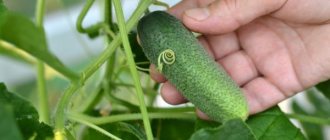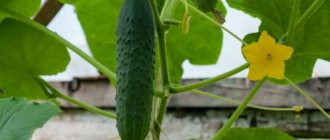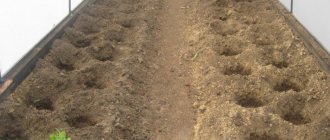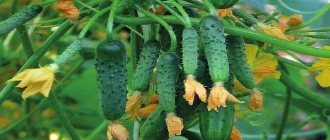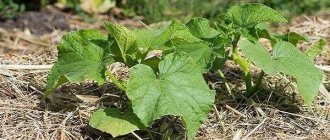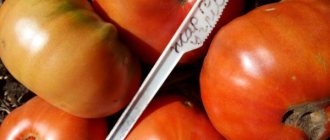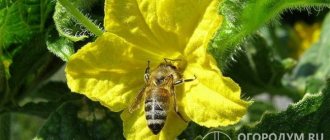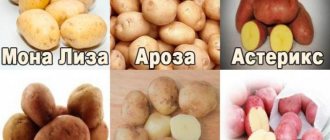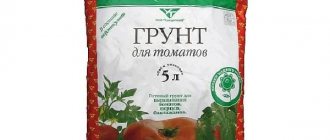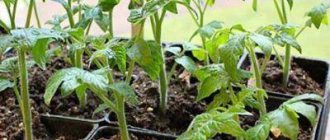Vegetable growing » Cucumbers
0
1507
Article rating
Kira Stoletova
The Asterix variety cucumber is a hybrid plant with an average ripening period. The variety was first bred in the Netherlands. Within a few years, almost every second gardener knew about the Asterix f1 cucumber. It became famous due to its excellent taste and fruiting percentage.
Description of cucumber variety Asterix
Description and characteristics of the variety
The Asterix f1 Bejo cucumber was created by Russian specialists collaborating with the world-famous Dutch breeding company Bejo Zaden.
It was developed by breeders V. Ilyin, N. Ilyina and V. Putyatin. In our country, its seeds are distributed by "Gavrish" and others. Since 1998, the hybrid has been listed in the State Register. It is recommended for cultivation in open ground in the Central and Central Black Earth regions, as well as in neighboring areas with a suitable climate. You can also plant it in a greenhouse, but there you will have to additionally treat the flowers with a brush to help with pollination.
The hybrid bush is medium-sized, moderately climbing and forms few lateral shoots. Almost all bunches with fruits (up to five greens in a bunch) develop on the main stem. The root system is strong and branched. The leaves are medium-sized, slightly wrinkled, and wavy at the edges. Flowers are pollinated by bees.
The fruits ripen in 45-55 days from the moment of emergence. One cucumber reaches 10-12 cm in length, the ratio of length to diameter does not exceed 3.1. The fruits weigh 66-87 grams. The color is dark green, the surface is covered with medium-sized tubercles with white spines. The shape is cylindrical with slight ribbing. The taste is rated as excellent, the flesh is juicy, elastic and aromatic, the fruits have a pleasant crunch.
Productivity and benefits of the variety
The yield of the plant varies from 132 to 322 centners per hectare. This is much higher than most cucumber varieties. At the same time, the yield of marketable products is at least 80% of the total harvest volume.
Among the positive qualities of the Asterix F1 variety are the following:
- Unpretentiousness to temperature changes and stable immunity to some diseases. The plant tolerates both excess moisture and drought.
- Excellent taste properties of cucumbers. Zelentsy taste very similar to gherkins.
- The versatility of fruit use. Cucumbers are great for pickling, pickling, and fresh salads.
- High yield and long fruiting period.
Attention!
This variety has only two disadvantages: instability to prolonged cold spells and the need for regular collection of greens.
If you do not collect them on time, they will die, and new ones will not be able to grow and ripen.
Landing
The crop can be grown through seedlings or directly in a permanent place. Seedlings are needed in cold regions where the soil warms up sufficiently only in June.
Usually the seeds are sold already treated with fungicides; they do not require additional soaking.
Direct sowing
The soil temperature should be about +15, or better yet +20 degrees. The soil is prepared by filling the grooves with a mixture of peat, humus, sand with the addition of mineral fertilizers, then it is well moistened and holes are made for the seeds. Sowing depth is 1.5-2 cm. The grains buried in the ground are lightly mulched with peat and covered with film.
You can sow seeds in the greenhouse in early May.
Seedlings
For seedlings, you will need pots with a volume of 400-500 ml or special peat cassettes 8 by 8 cm. Seedlings are grown in a special soil mixture or a homemade substrate from garden soil, humus and sawdust. The soil is spilled with Extrasol solution 0.2% or another means for disinfecting the soil. Place one grain in each container to a depth of 2 cm.
With the emergence of seedlings, the pots are transferred to the southern or eastern windowsill. Feeding is optional, but you can feed it once with a root development product, for example, Kemira Lux. Before planting the bushes in a permanent place, the roots are treated with a stimulant - Epin or Zircon.
Seedlings can be transplanted at the age of 3 weeks.
Environmental resistance
Asterix F1 is resistant to brown olive spot, cladosporiosis, powdery mildew and cucumber mosaic virus. But, despite this, it can be affected by peronosporosis (downy mildew).
Melon aphids, slugs, whiteflies and mites are pests that can cause trouble for the plant. They can be controlled using insecticides:
- Actofit is usually used against spider mites;
- Actellik is suitable for other insects.
The crop is excellent for growing in southern regions because it tolerates heat and drought conditions well. In the northern regions and central Russia, it is grown in greenhouses, since the greatest threat to the harvest is low temperature.
Growing and care
Care includes tying, watering, loosening the soil and fertilizing.
It is necessary to water cucumbers in the mornings or evenings, when the soil is dry. Warm, settled water is used. Sprinkling can be done periodically.
For 1 sq. m need at least 25 liters of water.
The crust on the surface of the earth is carefully pierced with a pitchfork once a week so that the roots receive oxygen.
Feed 2-3 times during the development period with complex fertilizers or mullein solution.
Fruit characteristics
The description of cucumbers will be incomplete without characterizing ripe cucumbers.
Characteristics of the fruits of the Asterix variety:
- The cucumbers are from 8 to 11 cm in length.
- The shape of greens is elongated, cylindrical.
- The skin is emerald green, covered with short white spines.
- The skin is lumpy.
- The pulp is juicy and crispy.
- White stripes appear on the skin.
- The weight of one green vegetable reaches 100 g.
- Universal use in cooking.
- Cucumbers tend to overgrow if left unpicked for a long time.
- Suitable for pickling due to the small size of greens.
Greenhouse cucumbers are in no way inferior to street cucumbers in taste and size. To increase the yield and quality of greens, mineral and organic fertilizers are regularly added to the soil. Before planting seedlings, the beds need to be watered with a solution of potassium permanganate to disinfect them.
See also
How to feed cucumbers with mullein, horse and rabbit manureRead
Pros and cons of the variety
The long cultivation period of the hybrid Asterix f1 allows one to judge the advantages and disadvantages of the variety. Since the variety is popular among vegetable growers, we suggest that you familiarize yourself with the description of the positive characteristics of the cucumber.
pros
- Asterix is famous for its high productivity, since there are up to 15 kg of fruits per 1 m2, and 335 centners of cucumbers per 1 hectare;
- Excellent presentation of the product;
- Cucumbers have excellent taste;
- The variety is characterized by strong immunity to most common crop diseases;
- Developed resistance to dry weather;
- Asterix is versatile in its use of fruits;
- High shelf life and resistance to transportability of cucumbers.
Minuses
Thanks to their growing experience, vegetable growers have identified the disadvantages of growing a hybrid variety:
- Asterix is not susceptible to low temperatures;
- Cucumbers do not contain seeds for subsequent sowing, as a result of which the seed must be purchased anew.
Cultivation information
The official botanical register of the Russian Federation indicates that “Asterix F1” is suitable for the center of the European part and for the central Black Earth Region. A unique feature of the variety is that it can reproduce by budding. As a result, the earliest harvest is clustered on the main stem. The side shoots are much less developed and almost never ripen 100%. Cucumbers of this variety produce developed and stable fruit and are considered sun-loving, but the seedlings do not tolerate direct light.
It is very important, judging by the reviews, to remove the ripened fruits in a timely manner. Violation of this rule will lead to complete destruction of the harvest, and the speed of plant growth will not allow obtaining a new harvest. Seed shoots appear at the same time. But this requires thoroughly fertilizing the area. Seedlings and sowing seeds are equally effective when growing Asterix F1.
A natural requirement for growing cucumbers is constant watering of the bush. It is best to do this 4-6 times every week, but in hot weather you need to water more often. In any case, the intensity of watering is determined by the dryness of the soil. The soil is fed monthly with complex vitamin compounds and microelements. No special treatment is required to protect against mildew and oidium - the plant itself is able to protect itself from them.
It is worth refraining from planting “Asterix F1” seeds in situations where the likelihood of prolonged cold spells cannot be ruled out. Soaking the seed (as opposed to treating it with fungicides) is not recommended. The holes or furrows where seeds are planted must be filled with:
- peat;
- suitable mineral fertilizers;
- humus;
- sand.
As soon as the first large leaves grow, the roots need to be fed. Observing a strict lighting regime helps to avoid excessive stretching of seedlings. As with other varieties, it is recommended to plant “Asterix” where cabbage, potatoes and legumes previously grew (with the exception of beans).
For irrigation, you need to take water heated to 20-25 degrees. Its consumption ranges from 25 to 30 liters per 1 sq. m. Fertilizing in the soil is most often done with urea, ammonium nitrate or superphosphate. For root feeding, a warm solution of bird droppings or animal manure is best suited. Foliar feeding is carried out once every seven days.
You will learn more about cucumbers of the Asterix F1 variety in the following video.
Care
Like most other varieties of cucumber crop, Asterix f1 needs standard agrotechnical procedures: watering, fertilizing and hilling the beds, forming and tying up the bushes of the variety. To ensure that the care procedure does not lead to the death of the plant or transformation of the cucumber, vegetable growers offer a list of recommendations, the description of which is presented below.
Watering
It is recommended to water Asterix when the sun is not too hot: in the morning or evening. To water cucumbers, as a rule, warm water is used, infused in the sun's rays, or heated independently. Sprinkling of bushes is occasionally allowed.
Watering work must be carried out strictly at the root of the bushes of the variety so that the plant is not subject to root rot. As a rule, more than 25 liters of irrigation liquid are used per 1 m2. The amount of watering work depends on weather conditions. If there is a drought, Asterix bushes need to be watered daily. In warm weather, cucumbers are watered once every 2-3 days.
Garter and bush formation
Asterix is a cucumber variety that needs to be shaped to a vertical trellis. As a rule, the main stem is fixed to the trellis, and its top is directed downward. Vegetable growers also suggest pinching the side shoots of the cucumber. At the time of pinching, the lower branches and the main stem of the variety should not be cut off. The remaining strands of the cucumber must be pinched at a distance of 50 cm.
Top dressing
Over the entire season, Asterix is fed 3 times. All fertilizing of the variety is carried out with complex fertilizers “Clean List”, “Agro Nova” or “Rodnichok”, and also feeds the soil with potassium, superphosphate, urea and nitrophoska.
Hilling
To prevent bark from forming on cucumber beds, the soil must be loosened and hilled. Due to the fact that the root system of the cucumber is located close to the surface, the soil is carefully pierced with a pitchfork. Hilling up beds with cucumbers is carried out so that the roots of the plant can strengthen and the plant has the opportunity to form new roots.
Growing
F1 Asterix cucumbers are cultivated using two methods:
- seedling method;
- by direct sowing of seeds into the ground.
Sowing of seedlings is carried out in early May.
The seeds are treated with the fungicide Thiram. Do not soak when planting.
Basic Rules:
- prepare pots (volume 400 cm³) or cassettes (size 8x8 cm);
- fill the containers with a soil mixture intended for growing vegetable crops, pre-treated with Extrasol-55 with a composition of 0.2%;
- plant seeds to a depth of 2 cm;
- after the first large leaves sprout, you should feed the roots (preferably using Kemir-Lux, Radifarm products);
- to avoid stretching of seedlings, a certain light regime should be observed;
- Before planting seedlings in the ground, the roots should be treated with Epin or Zircon.
Have you treated your plants with Extrasol-55? Not really
Seeds are sown in open ground at the end of May - beginning of June.
Seeds are sown in open ground when the soil warms up to 15-20 °C during the day and not lower than 8 °C at night (i.e., after the threat of frost has passed).
To sow, make grooves or holes in the ground, fill them with a substrate of peat, manure humus, sand and mineral fertilizers, and water them. Plant seeds in these holes (grooves) to a depth of 1.5-2.0 cm, then mulch with peat or rotted manure, and then cover the grooves with film.
Seeds are sown in greenhouses (glazed or film) at the beginning of May, or 20-25-day-old seedlings with 3-5 true leaves are planted from mid-May.
When transplanting seedlings, the following quantitative standards should be adhered to:
- sowing pattern - 30x50cm;
- distance between grooves 50 cm;
- 3-4 plants per 1 m².
A simple rule for increasing yield is to plant cucumber seeds in the ground where potatoes, cabbage and legumes (except beans) previously grew.
Cucumber f1 Asterix needs:
- Water regularly, on average once every 3-4 days (depending on weather conditions) in the morning or evening. Water temperature is approximately 20-25 °C. Water consumption - 25-30 l per 1 m2;
- weed regularly. Eliminating weeds will allow the plant to receive more moisture, light and nutrients, which means it will grow and bear fruit better;
- regularly loosen the soil, which will provide the plant’s roots with a sufficient amount of oxygen;
- feed;
- mulch (peat, sawdust).
For feeding:
- you should use successfully proven products (ammonium nitrate or urea, as well as superphosphate);
- regularly carry out root feeding (using manure or bird droppings diluted in warm water);
- It is recommended to carry out foliar feeding weekly (using solutions of complex fertilizers with microelements).
Expert opinion Ivan Yuryevich Filatov, private farmer for more than 30 years Harvesting should be done regularly as the fruit grows. The more often the fruits are harvested, the more ovaries are formed.
Breeders have declared that the hybrid is resistant to a typical set of cucumber diseases, which makes it a very practical choice for gardeners.
Asterix f1 cucumber has a high degree of resistance to:
cucumber scab (fruit cladosporiosis);
cucumber mosaic;
powdery mildew.
It has an intermediate degree of resistance to downy mildew (may appear as a result of severe waterlogging). On the affected leaves, mottling first appears, and then light yellow spots appear. Over time, these spots merge and turn into affected areas, the color of which ranges from yellowish-brown to brown.
To defeat the fungus, remove and burn damaged parts of the plant. The remaining ones should be treated with fungicides (0.5% solution of Bord mixture, Ridomil, Kurzat and Oksikhom), following the instructions.
Of the pests, the greatest damage to cucumbers is caused by:
spider mite;
aphid;
thrips.
You can use Actellik, Talstar, etc. against them. The biological product Actofite is also effective against spider mites (maximum effectiveness at temperatures above 18-20˚C).
Compliance with the rules for caring for crops is an excellent prevention that will minimize the risks of all diseases.
The uniqueness of the variety's agricultural technology
Since the seeds of the species in question are selected to be similar in size, they germinate quickly and usually at about the same time. There are two methods of sowing the cucumber crop of the Asterix F1 variety:
- direct sowing, that is, seeds;
- seedling method.
The optimal month of spring for direct sowing will be May. Seeds are available in the store that are pre-treated with fungicides before packaging, which frees the gardener from additional preparation. Before planting, pay attention to whether the seeds have been treated or not. If not, then it is necessary to carry out independent dressing to prevent infection of the crop with various diseases.
Attention!
Considering that the variety is resistant to some diseases, when choosing a fungicide it is necessary to determine the spectrum of action.
When independently preparing seeds for sowing at home, you will need a 1% solution of potassium permanganate. You need to put the seeds in it for a few minutes, then transfer them to water at room temperature for 10-15 minutes, that is, soak them. After completing the procedures, the seeds are examined and the largest ones are selected for planting. Before sowing, you need to wait until they are completely dry.
Wet sawdust is suitable as an additional fertilizer for the soil; the main thing is not to sow the seeds deeper than 2 centimeters. For hole planting, it is better to place two seeds in one hole. Since the root system of each plant will be extensive, it is better to maintain a distance between:
- adjacent seeds at least 12 cm;
- beds - at least half a meter.
The lateral branches of the bush are characterized by rather slow development, which makes it possible to grow the hybrid in a greenhouse. In most cases, seedlings are used to speed up the time to obtain the first harvest. Using this method, it is possible to monitor cucumbers both in the greenhouse and at home. It is necessary to make the right healthy mixture for future seedlings - mix:
- sand;
- peat;
- ordinary soil from the land plot in approximately equal proportions.
Seeds, as with direct sowing, should be sown to a depth of no more than 1.5-2 cm. Here it is important to monitor the temperature - the optimal temperature for constantly maintaining the greenhouse effect will be 20-25 oC. This can be achieved, for example, by simply wrapping the seeds in film and spraying water on them. With the appearance of the first leaves on the seedlings, you need to lower the temperature slightly - to somewhere around 18-19 oC.
Do not use containers containing fermented milk products when replanting, as this may have a detrimental effect on the future fruits of the plants being grown. Cucumbers cultivated in greenhouse conditions will be in no way inferior to street fruits in terms of taste and size.
The plant is characterized by intense fruitfulness, which is characteristic even in not very favorable weather conditions, so it is necessary to harvest the crop quite regularly - every 2-3 days. If Asterix cucumbers are not picked for a long time, they tend to overgrow and lose their characteristic taste.
Recommendations:
- To achieve a higher percentage of hybrid yield, constant watering of the bushes is necessary. Plants love moisture, watering should be almost daily - from 4 times a week, without allowing the soil to dry out.
- Frequent application of fertilizers to the soil - organic and mineral fertilizers - is necessary.
- Hybrid Asterix loves hot climates, so this representative of cucumbers will be more suitable for gardeners in the southern regions.
But the variety tolerates drought well, without shock, which makes it possible to grow it in almost any conditions, thanks to its unpretentiousness.
Reviews of the cucumber variety Asterix
Although Asterix F1 cucumbers were developed quite recently, they have already caught the fancy of domestic summer residents.
“I’ve been planting this variety for the second year in a row. Zelentsy are more like gherkins, especially if you pick them as soon as they appear. Delicious and crispy. During the entire growing period, the plants never got sick and always produced a stable harvest. I recommend Asterix cucumbers to everyone.”
Ekaterina, 33 years old:
“A couple of years ago my grandmother recommended planting this variety. I love cucumbers, so I immediately decided to buy seeds and sow them. The seedlings sprouted quickly and amicably. The manufacturer states that seedlings need to be grown on fertile soil, so I decided to immediately add manure to the beds. The yield was excellent; cucumbers were picked from the garden every day. Delicious, juicy. Suitable for vegetable salads.”
“I didn’t like the cucumbers, maybe it’s the soil or the seeds. But the seedlings sprouted poorly, only a few bushes. The yield is not bad, but I would like more. The greens actually taste delicious. The skin is thin and the flesh is juicy. We liked it pickled.”
Description of the variety
Short review:
The Asterix variety (F1) is a high-yielding hybrid that requires pollination by bees to bear fruit. In terms of ripening time, cucumbers belong to mid-early agricultural crops, like the Octopus and Lancaster F1 varieties. From the appearance of sprouts to harvest, 47-55 days pass.
Medium-sized plants have a powerful, well-developed root system. The leaves are medium sized, dark green in color. Flowers are predominantly of the female type.
Description of the hybrid fruits:
- Cylindrical shape;
- The ribbed skin is green with short white stripes;
- Length 10-12 mm;
- Weight from 70 to 90 grams;
- Pubescence is rare;
- Dense and crispy flesh.
Opinions and recommendations
Positive reviews from vegetable growers indicate the unpretentiousness of the variety and the excellent taste of the fruit. Although the variety was recently bred, it has already become popular among summer residents, who note that greens are similar to gherkins.
The disadvantage of the hybrid is its low resistance to prolonged cold spells. Reviews from vegetable growers indicate intensive yield. They recommend picking the fruits in a timely manner, because overripe greens lose their taste.
